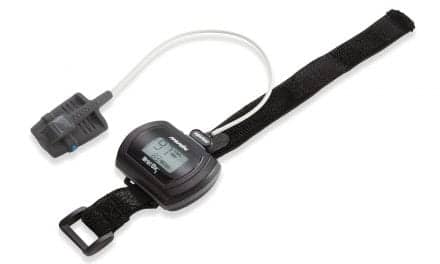 |
Evidence-based research to quantify outcomes can help home medical equipment providers deal with reimbursement challenges. Contrary to popular belief, health care outcomes are not just clinical. Outcomes also involve variables such as cost and patient satisfaction.
When improving care, it is inevitable that changing one outcome variable may impact another. The evidence to support better reimbursement for unique medical devices, and in particular long-term oxygen therapy (LTOT) devices used in home care, is lacking. Manufacturers create new products, yet do not involve home care providers early enough in the process.
Market pressures force HME organizations to provide new devices, yet the new technology may cost more than what is currently provided—and not improve patient outcomes or reduce operational costs. Providers must ask: 1) Should we invest in this technology? 2) What are the associated benefits and risks of the capital investment? 3) What is the impact on patient outcomes as a result of adopting the technology? and 4) What is the return on investment to the organization?
The focus must be on how the new technology improves patient care while reducing operational expenses. These issues represent challenges for clinicians, home care owners and managers, and policymakers. Integrating business and clinical considerations can impact policy at two levels: 1) It can identify optimal capital expenditure decisions for individual organizations; 2) It can identify optimal health policies related to technology at a national level, thus favorably impacting the adoption of “new” HCPCS codes.
Show Me the Evidence
Medical decisions regarding standards of care are based on evidence created through controlled clinical studies. The studies create a body of evidence that supports a specific clinical practice or intervention. Systematic reviews (which summarize large bodies of evidence from multiple published studies and help to explain differences among studies on the same question) are stronger than primary observational studies, and are best when they include a randomized clinical trial.
The basis of most medical procedures is supported by well-designed evidence-based clinical trials. However, little evidence has been generated regarding supplemental oxygen for patients in the home. The best available evidence on LTOT is from studies conducted from decades-old research. Despite a lack of ongoing research, the studies are still used to support qualification, and substantiate reimbursement for patients who require LTOT in the home.
Nowadays, patients are discharged from the hospital to the home sooner. As a result, LTOT is prescribed earlier and more frequently for patients with chronic lung disease. In the past, many patients were in the later disease stages and did not benefit from supplemental oxygen therapy. Today, thanks to advances in medical science, these patients are healthier and capable of more strenuous activities outside of the home—and use their portable oxygen systems more frequently.
The typical oxygen user now requests small, durable, and efficient systems to facilitate an active lifestyle. Manufacturers have responded with more efficient systems to support better patient outcomes, increased satisfaction, and greater operational efficiency for the home care provider. However, there is little or no evidence to help distinguish the advantages of one system over another.
Increasing the Evidence
Evidence-based technology assessment begins with a clinical question: Does the new technology provide more of a benefit or more of an advantage than what is currently provided? A search of databases for studies or clinical practice guidelines can help answer the question. (Common databases include Medline and AHRQ—the Agency for Healthcare Research and Quality.) The problem is that most new devices are approved by the FDA based on substantial equivalence, and little new evidence exists.
New equipment has entered the market at a feverish pace as the demand by patients, physicians, and providers has increased. The new devices in many cases require a respiratory therapist to “titrate” a specific patient to ensure the most optimal system and appropriate oxygenation based on the patient’s needs.
While demand has increased, the evidence to differentiate devices has not evolved. Each new device should have had clinical trials to document the effectiveness of the therapy with measurable positive outcomes. Standards should have been developed to assure consistent application of the equipment. Appropriate reimbursement should have been applied based on the functionality and benefits of the oxygen systems in achieving positive outcomes. However, the aforementioned did not happen.
We now find ourselves at a point where economic pressures—high gasoline prices and declining consumer confidence levels—are combining with reimbursement insufficient to support equipment costs. Operational expenses are up, along with an increased demand for unique systems. All this requires us to approach the process in a different manner. Every premise for the delivery of LTOT in the home should be challenged, evaluated, and finally substantiated.
We must abandon the “sacred cows” and conduct appropriate evidence-based research to validate our opinions regarding the effectiveness of certain LTOT equipment, with a focus on patient care. Therapy options continue to evolve, and more options are available to support benefits to patients and providers.
Do we know what the patient really needs 24 hours a day? What is an acceptable dose of oxygen at activity levels such as sleep, rest, and exercise, and at varying altitudes? Do we know if current equipment can adjust to meet a patient’s needs at all activity levels?
What is the acceptable weight of a portable oxygen system? Do the accessory items such as extra tubing, humidifiers, nasal cannula, and related adapters positively or negatively impact therapy? Does the oxygen system help to reduce operational costs while not compromising patient care? These and other questions can be effectively answered through quantifying data and outcomes through evidence-based research. In answering the above questions, we create the foundation for the science of LTOT, respiratory therapy services, and the value of home care—thus supporting the arguments for appropriate reimbursement.
Vernon R. Pertelle, MBA, RRT, is senior director/assistant vice president for Tri-City Healthcare District, Home Care, Occupational Health and Wellness, and Rehabilitation Services, Center for Wound Care and Hyperbaric Medicine, Oceanside, Calif. Robert McCoy, BS, RRT, FAARC, is managing director, Valley Inspired Products Inc, Apple Valley, Minn. For further information, contact [email protected].









